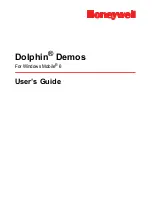
Planning for Availability
This section describes LVM features that can improve the availability and redundancy of your data.
It addresses the following topics:
•
“Increasing Data Availability Through Mirroring” (page 24)
•
“Increasing Disk Redundancy Through Disk Sparing” (page 27)
•
“Increasing Hardware Path Redundancy Through Multipathing” (page 28)
Increasing Data Availability Through Mirroring
NOTE:
Mirroring requires an optional product, HP MirrorDisk/UX.
Mirroring means storing identical copies of data in logical volumes, preferably on separate disks.
This redundancy has several advantages:
•
If you mirror the root file system and swap, the operating system can tolerate a root disk failure
because critical data is available on more than one LVM disk.
•
If you mirror the logical volumes used by a particular application, the application continues
to run even if a disk fails.
•
If an I/O channel fails, LVM can recover the data from the duplicate source.
•
Mirroring speeds read-intensive applications by enabling the hardware to read data from the
most convenient LVM disk.
•
You can back up one copy of the data while another copy continues to run.
Mirroring maps one logical extent to two or more sets of physical extents. The number of logical
extents remains constant, but the number of used physical extents (and therefore, occupied disk
space) changes depending on the number of mirrored copies. Mirroring increases data protection
and system availability, but consumes twice as much disk space (or as many times more as there
are mirror copies), so use disk mirroring for volatile, mission-critical data only.
Mirrored logical volumes must belong to the same volume group; you cannot mirror across volume
groups.
This section contains the following information:
•
“Mirror Write Behavior Control” (page 24)
•
“Synchronizing a Mirrored Logical Volume” (page 26)
To learn more about basic mirroring tasks, see Disk and File Management Tasks on HP-UX published
by Prentice Hall PTR, 1997.
Mirror Write Behavior Control
Three policies govern how mirrored logical extents are written to physical extents: the
allocation
policy
, the
scheduling policy
for disk writes, and the
synchronization policy
for crash recovery.
These policies can be set using HP SMH, the
lvcreate
command, or the
lvchange
command.
Allocation Policy
Mirrored extents can be allocated on physical volumes by
strict
or
nonstrict
,
contiguous
or
noncontiguous
policies. By default, the allocation policy of mirrored logical volumes is set to strict,
noncontiguous.
Strict and Nonstrict Allocation
Strict allocation requires logical extents to be mirrored to physical extents on different physical
volumes. Nonstrict allocation allows logical extents to be mirrored to physical extents that may be
24
Configuring LVM
















































